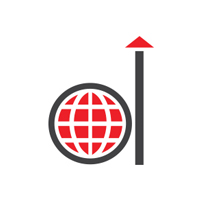While Salesforce captures the global CRM market share of 23.8% percent, a report by MuleSoft indicates that more than 55% of the organizations struggle with creating integrated user experiences.

Salesforce integration solutions help enterprises to maximize the potential of business applications and tools holistically by bringing them all on a single platform. Ease of data access, highly collaborative and communicative ecosystem, automated processes and workflows, are some of the advantages of integrating external applications with Salesforce. Though CRM integrations act as productivity and performance accelerators for organizations, they raise serious challenges and risks like data loss, security, and business disruptions that need to be addressed intelligently.
Here are some proven hacks that Salesforce integration consultants and partners leverage for integrating Salesforce applications smoothly.
1. Get an Error-Handling Plan Handy
One of the biggest challenges in Salesforce integrations arises when apps are connected for data transfer. There are always the chances of insecure connections, data redundancy, inconsistency, and even partial or total data loss. The most common mistake organizations make is that they forget about having a backup plan for any contingencies that may pop up during the integration process. Most of the errors can be tackled by implementing try scope and exception handling functions. Salesforce integration companies are always ready with an error-handling plan to address any such scenario is the most efficient way to integrate your Salesforce with applications seamlessly.
2. Verify the Frequency & Extent of the Information Flow
During the integration process, data from external systems is moved into Salesforce to leverage Salesforce analytics and workflows for automating the business processes. As an integrated system involves collaborating multiple applications and users, it requires taking account of how much data will be flowing from source applications and who all will be able to access the same. Salesforce integration partners document every aspect of the information flow beforehand so that the movement of data and user access can be regulated for secure assimilation of applications. Make sure that your Salesforce integration team has a clear insight on this front to avoid any roadblocks.
3. Validate & Document the API Limits
Salesforce enforces defined API limits to balance the transaction loads for optimized performance and making the platform available to all Salesforce customers. Likewise, other to-be-integrated applications may have restricted API limits that can disrupt the workflows and processes leading to an unpleasant integration experience. To conquer such challenges throughout the integration process, these API limits are documented and monitored efficiently by Salesforce integration consultants.
Transform Your Business with Professional Salesforce Integration Experts
4. Determine the Best Integration Approach & Tool
As no one size fits all, the approach and tool to integrate with Salesforce must be aligned to specific business needs, models, and objectives. Choose the appropriate tool that comes with a Salesforce connector or use custom code for integrating with applications following the real-time or batch-wise approach, whatever best suits the business. Salesforce integration companies determine the right approach and tool assure seamless Salesforce integrations while simplifying and expediting the process.
5. Review All Configuration Options
As you initiate the integration process, check out all the options to configure the integrated systems. Standard integration does not require much coding but integrating with complex and large applications needs expert advisory and know-how. For this, Salesforce integration solutions provide out-of-the-box features that can be used directly without any modifications. Selecting an out-of-the-box configuration model can help to save significant time, cost, and effort with benefits like automated business processes, streamlined application integrations, enhanced user experience, and scaled business performance.
To Conclude
Organizations spend hugely on Salesforce to streamline their core functions like sales, marketing, and more. Integrating in-use systems with Salesforce integration consultants and partners helps organizations reap the benefits of a collaborative, communicative, and transparent system for augmented performance. The above-mentioned hacks will help streamline your process of integration and lay the foundation for continued success in maximizing the potential of Salesforce.
Salesforce Integration Best Practices: Connecting the Dots To Unlock the Full Potential of Salesforce





